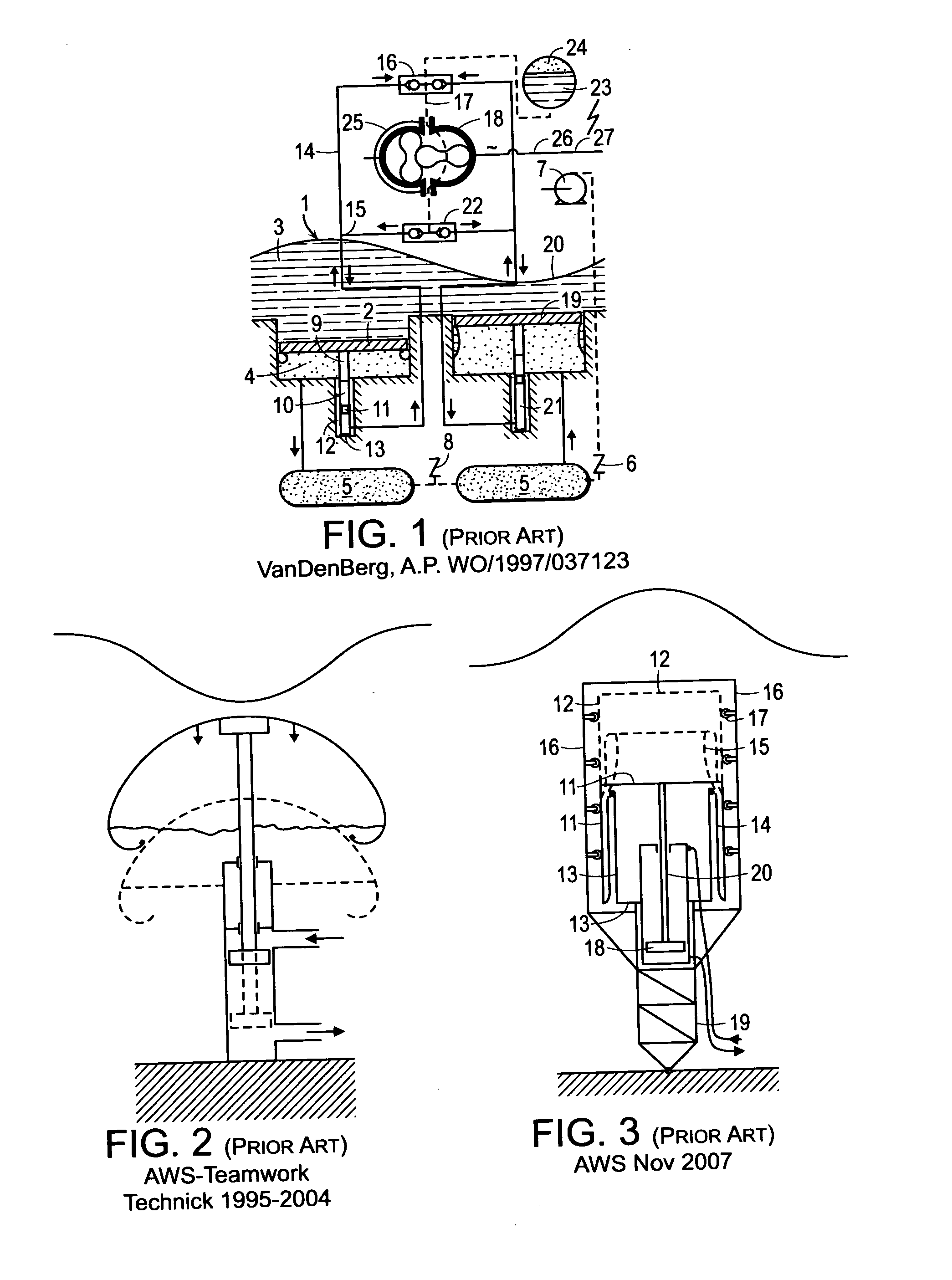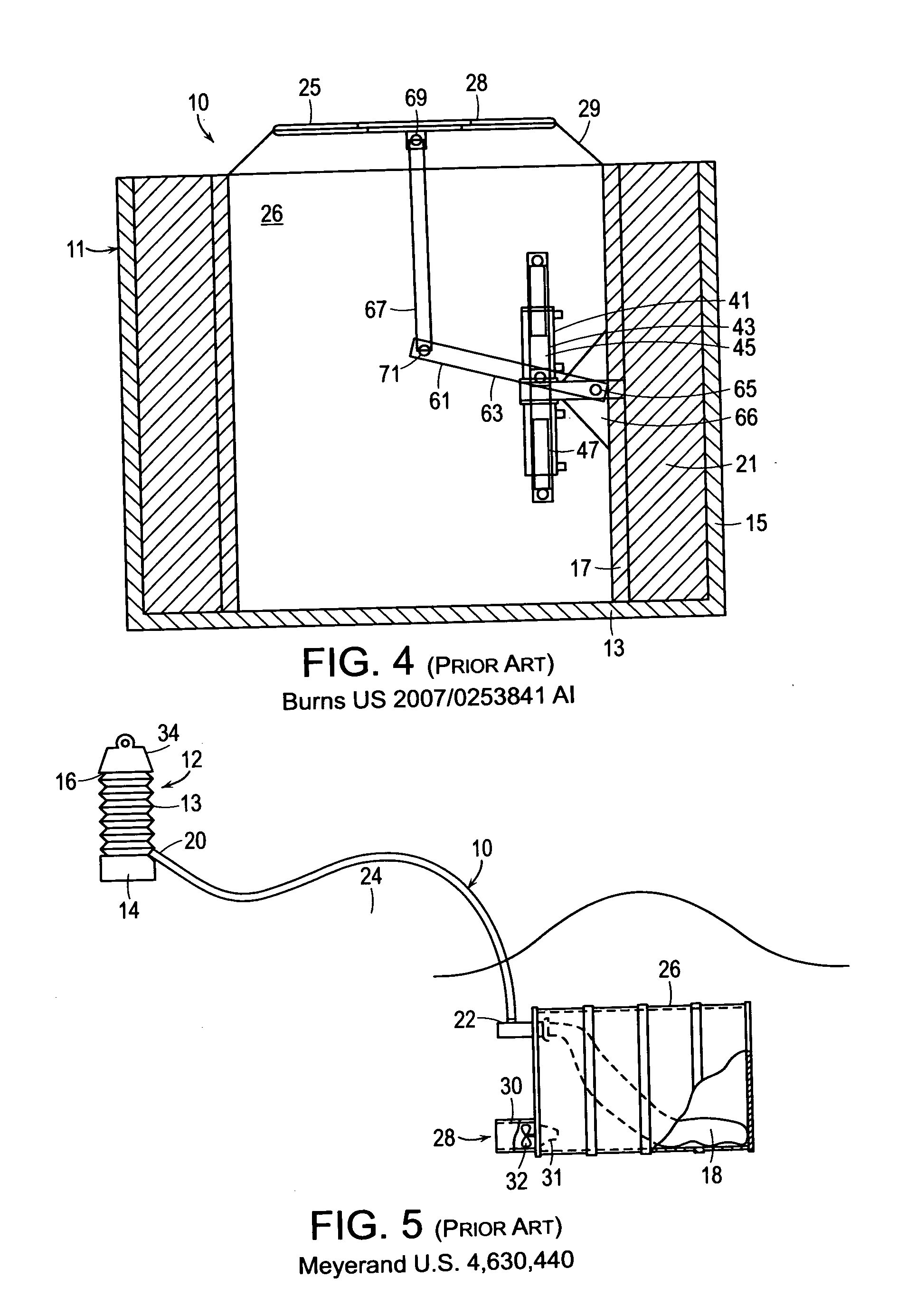Heaving ocean wave energy converter
a wave energy converter and wave energy technology, applied in the direction of electric generator control, machines/engines, mechanical equipment, etc., can solve the problems of low wave energy capture efficiency, few commercial owec deployments, and high cost per average unit of energy captur
- Summary
- Abstract
- Description
- Claims
- Application Information
AI Technical Summary
Benefits of technology
Problems solved by technology
Method used
Image
Examples
Embodiment Construction
[0054]FIGS. 1-5 show prior art previously discussed herein. It should be noted that any of the embodiments of the present invention of FIGS. 6-18 can use partial evacuation of said containers or surface venting (snorkel vent or bellows) and any of these embodiments can be enhanced by mechanically connected surface floats or buoys. FIG. 6 shows one embodiment of the present invention utilizing a submerged gas tight flexible elastomer impregnated fabric reinforced bellows 3, reinforced against partial internal vacuum and external hydrostatic pressure, affixed and sealed to a movable rigid upper surface 2 slighting below a wave trough 5 and a relatively fixed depth lower surface 1. Surfaces 1, 2 and 3 form a vertical axis gas tight container which can be circular or oblong in planar section. Rigid surfaces 1 and 2 may be fabricated of relatively light weight steel or fiber reinforced plastics (FRP) to maintain low weight and cost. The interior volume 4 of said container is partially ev...
PUM
 Login to View More
Login to View More Abstract
Description
Claims
Application Information
 Login to View More
Login to View More - R&D
- Intellectual Property
- Life Sciences
- Materials
- Tech Scout
- Unparalleled Data Quality
- Higher Quality Content
- 60% Fewer Hallucinations
Browse by: Latest US Patents, China's latest patents, Technical Efficacy Thesaurus, Application Domain, Technology Topic, Popular Technical Reports.
© 2025 PatSnap. All rights reserved.Legal|Privacy policy|Modern Slavery Act Transparency Statement|Sitemap|About US| Contact US: help@patsnap.com



